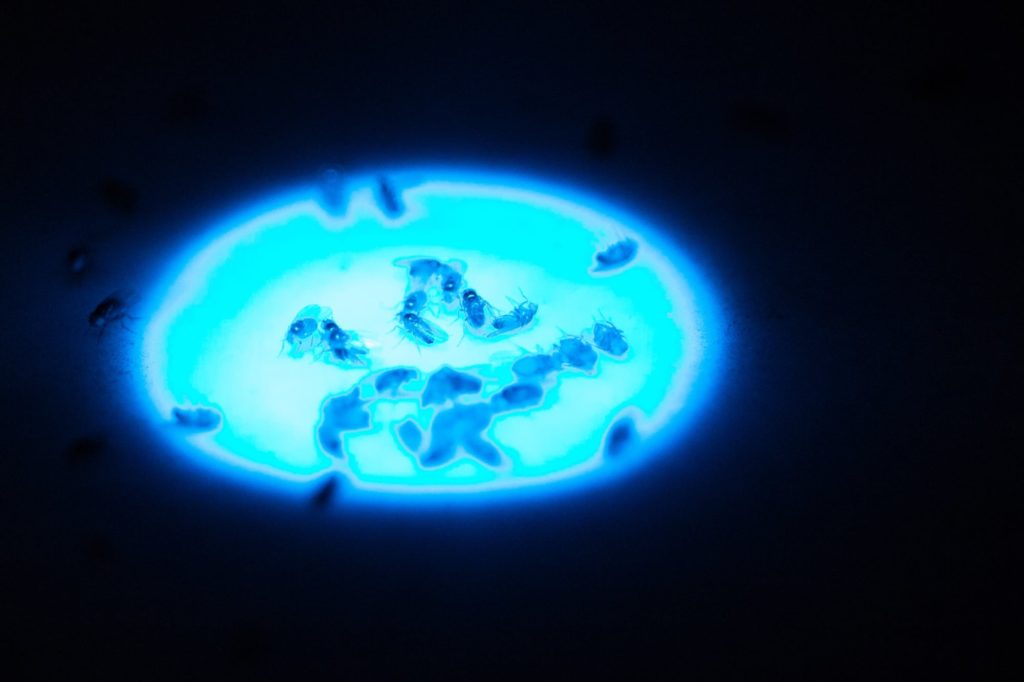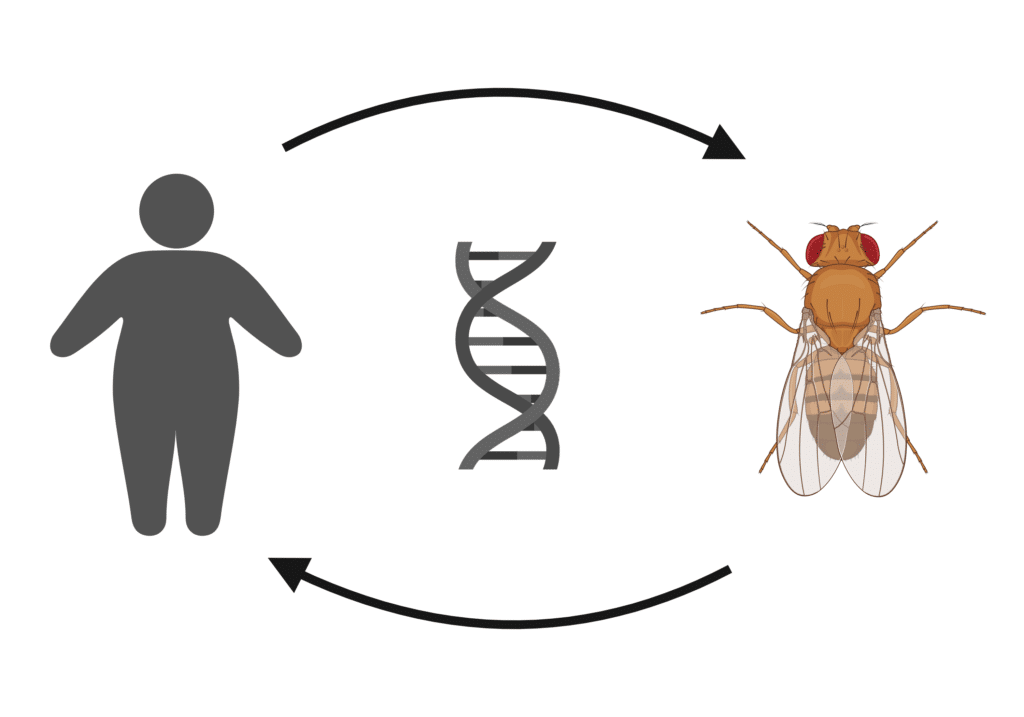Cph regulates neural stem cell temporal patterning
September 7, 2022
Read more
Fruit flies can be used as a novel predictive screening tool for human genetics, says a new study led by the Brand lab’s Neha Agrawal and Catherine Davidson, in collaboration with Sadaf Farooqi. By combining human genetics with genetic screening techniques in fruit flies, the team identified a novel role for the Hippo pathway in human obesity.
Agrawal N et al. (2021) Predicting novel candidate human obesity genes and their site of action by systematic functional screening in Drosophila. PLoS Biol 19(11):e3001255. DOI: 10.1371/journal.pbio.3001255.
Obesity has long been established as being influenced by both environmental and genetic factors. Despite this, identifying the genes that underly obesity and regulate human body weight remains challenging. By looking for variations in the DNA sequences coding for proteins in severely obese patients, this research took advantage of the fruit fly as a novel predictive tool to identify signalling pathways responsible for obesity in humans. The team first analysed the DNA sequences of severely obese children from consanguineous families (where parents are first or second cousins) and searched for rare homozygous genetic changes in their genes. They focussed on a set of genes that had not been previously linked to human obesity and identified their evolutionary counterparts (orthologues) in flies. Knocking down these genes in the fruit fly identified 4 genes that increased fat levels – dachsous, calpA, itpr and sidekick.
One of these genes (dachsous) is part of the well-conserved ‘Hippo’ signalling pathway. Analysing the Hippo pathway further, they found that knocking down other components of this pathway in the brain also gave rise to fat flies. Interestingly, when the researchers undertook genetic analysis in a larger cohort of obese individuals, some Hippo pathway components (including TAOK2) were found to have rare variants. Knocking down the fly orthologue of TAOK2 also resulted in fat flies, demonstrating the strength of using fruit flies in initial screening approaches.
These results highlight the role of the Hippo pathway in regulating fat storage in humans. The study also demonstrates a novel cross-disciplinary approach for predicting signaling pathways responsible for pathogenic disease by using fruit flies as a predictive screening tool for human genetics.
